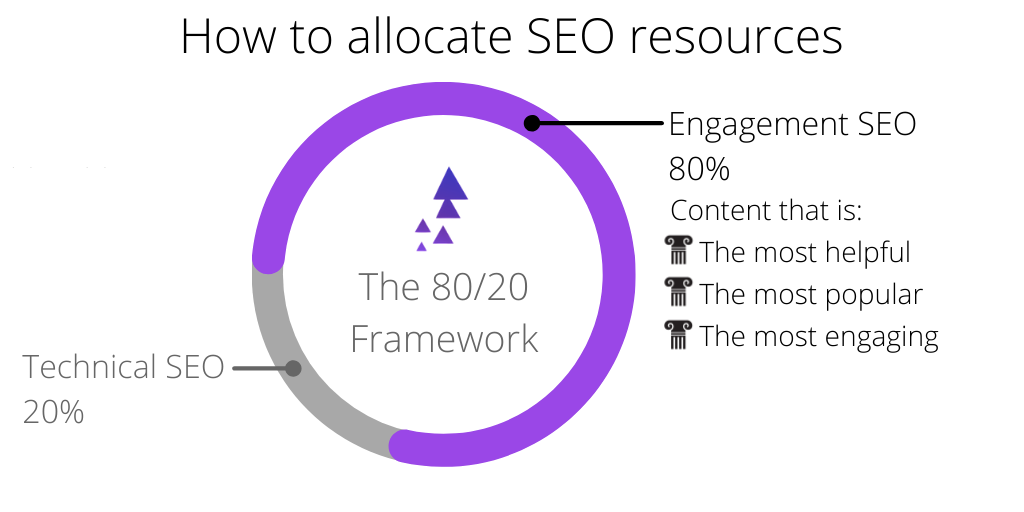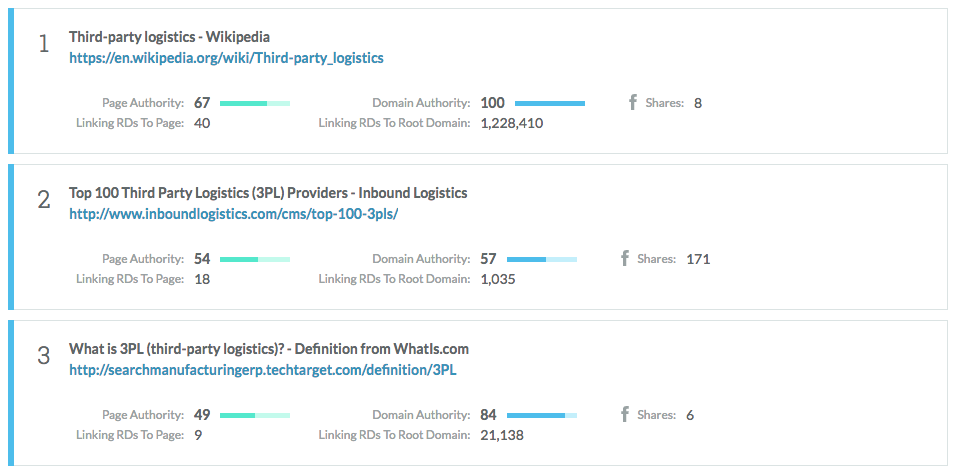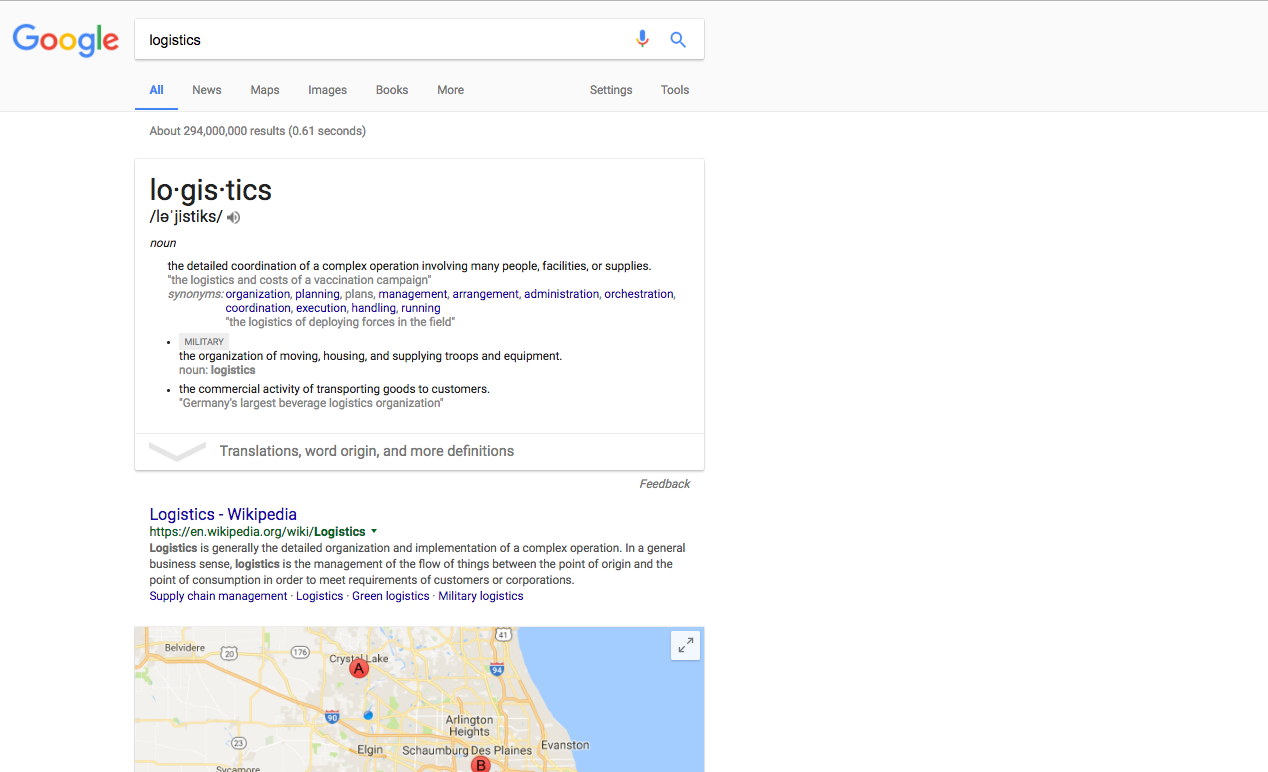5 Reasons Your Content Isn’t Ranking on Google and How to Fix Them
You have a documented content strategy. Your content is mapped to personas and buyers’ journeys. You write great stuff, use images, share on social … but it’s still not ranking well in search engines. What gives?

Sometimes even the most relevant, useful, and/or engaging content struggles to climb through search engine rankings. If your content happens to land on the second page of the SERPs, you’ve already lost the vast majority of your audience.
Don’t let low search engine rankings throw you off course. Bring out your magnifying glass, throw on your checkered cape, and let’s investigate.
When you are ready to get to work, scroll to the bottom and download a PDF checklist of everything you’re about to read—plus some extra tools—to help you knock out those content reviews.
Reason #1: Your Technical SEO is Broken; Fix it First
Before you take a good, hard look at your content, take the time to investigate whether a technical malfunction is behind your ranking problems.

Technical SEO is a small part of a modern SEO strategy, but some issues can make or break the best content strategy. The difficulty is that many technical SEO audits can produce a To Do list with hundreds of items that will not all have the same effect on rankings. Some technical SEO tasks can take a lot of time and never affect rankings. Others can be fixed quickly, and have a dramatic effect on SEO efforts.
There is a lot to consider when it comes to technical SEO, and I don’t have room to get into it all here. Distilled has a good spreadsheet checklist you can download, and this Moz post from 2015 is still a great start.
A detailed technical SEO audit can help reveal problems that may be limiting your rankings, and identify opportunities to increase traffic.
Reason #2: You Don’t Know Why Some Content Does Rank Well, so Evaluate the Winners
If technical issues aren’t your villain, then switch your focus to the content pieces that are performing well in organic search.
As competition increases and Google’s algorithms gain more experience delivering the best results for each keyword and category, the specific factors that drive content to top-ranking positions are not the same across the board. [Tweet that] Longer content, more keywords, or more links is not always the answer—you need to understand your keyword landscape to know what you need to drive improvement.
Evaluate the content that is ranking well for your target keywords by looking at what they have in common and what the best are doing to stand out. You can use a tool like Moz Explorer to analyze the link profiles of top-ranking content, but much of this evaluation is manual review of the SERP and/or the pages themselves.

Moz Explorer’s SERP Analysis tool displays the number of referring domains to content and the root domain of the content, as well as social shares.
Create a spreadsheet to help keep track of the characteristics of well-ranking content, and you may start to notice a pattern in your well-performing content. Consider whether each well-performing article or page:
- Includes a listicle, quiz, or poll.
- Is written as a “How-to” post.
- Provides a checklist.
- Contains video, GIFs, or other graphics.
- Is short, long, or formatted differently.
- Is based on breaking news or trends.
- Has a lot of backlinks pointing to it.
You may notice that most well-ranking content, for example, is longer, “How To” content, with a decent amount of backlinks. Conversely, content that is ranking well for a target keyword might be more recent and use a lot of media. If so, those factors are telling RankBrain that your audience values that kind of content.
Once you think you’ve nailed down why certain pieces are ranking, look at how you can apply those characteristics to other existing content (and how you can prioritize those things in new content as you create it).
If long content is what your audience prefers, for example, review shorter content pieces and expand them into more resourceful posts. If backlinks are communicating value to Google, reach out to friends and influencers in your space and share some of your great (but less linked-to) content to earn more good links.
Reason #3: Your Content Lost Focus; Discover User Intent and Target Strategically
Great content supplies a demand. If you’re not touching on users’ pain points or answering their questions, you’re not likely to earn a top search ranking. You can use a keyword strategy checklist to lead you through the process of creating user-specific content.
It’s also important to remember that user intent can change or evolve over time. Periodically revisiting search results for important keywords can help your content stay on target. When you did your initial keyword research six, nine, or even twelve months ago, there might have been much less competition on the SERP than there is today—especially if you’re in a growing industry or niche—so take another look.

Here are a few questions to help evaluate if you’re really hitting user intent:
- Does it cement the topic and grab the reader in the first paragraph?
- Does the content follow EAT (Expertise, Authority, Trustworthiness)?
- Does it answer the user’s question or need quickly and clearly?
When answering these questions, it’s important to not only look at your existing content, but also the content of your competitors—especially those whose posts rank higher than yours in Google.
Reason #4: Your Content Isn’t Cool; Earn Better Backlinks
Despite some black hat tactics of the past, backlinks are still one of Google’s top ranking factors. There’s just no denying that when other high-quality sites link to a piece of content … it’s probably good content.

When your content isn’t ranking well, it might be time to inspect your backlinks. You can do this with a tool like Moz Campaigns, which allows you to see how many links there are to a piece of content, the number of referring domains, as well as the quality of the domains that are linking back to your content.
Google has worked long and hard at sorting the good from the bad when it comes to backlinks. Authentic, earned links from high-quality sites are the only ones that will help. That means you want to earn links that are:
- On authoritative sites. .gov and .edu sites fit into this category, but so do many news sites or other domains that are generally recognized as leaders in their industries.
- On relevant sites. Links should come from pages and content that is relevant to your brand.
- Unique. A link from a good piece of content with only a handful of links is more valuable than a link from a piece of content that lists you and all of your competitors.
In general, quality trumps quantity when it comes to backlinks. If the competition is earning backlinks from news organizations or influencers, for example, and all of your backlinks are coming from backwoods blogs, you may need to rethink your content strategy to help bolster your backlink appeal.
There is one exception to the rule of quality over quantity, however, and that is when all the top-ranked organic results have links and you have zero. In that case you need one. Don’t go out and start buying links, but consider reaching out to smaller publishers if you haven’t been able to get anywhere with bigger content producers.
It’s also possible that you have the wrong backlinks. Links from spammy sites will hurt your SEO efforts. A tool like Ahrefs can help monitor your backlink profile. If you notice an unwanted link, reach out the publisher and ask him/her to remove it. If that doesn’t work, you might want to get in touch with Google to disavow the link.
Reason #5: Your SERP Snippet Sucks, so Learn to Stand Out on the Page
Take a look at your SERP snippet. Would you click on it? Improving your click-through-rate by even 3% can move a page up one ranking.
Today, increasing your organic position is more critical than ever. SERPs have gotten incredibly competitive—and crowded. Besides the influx of pay-per-click ads teeming at the top of the page or mobile display challenges, Google keeps adding more features—leaving even less room for top-rankers to share. Consider everything that can appear on a SERP:
- Ads (top and bottom)
- Knowledge Graph panels
- Related questions
- Featured snippets
- Answer boxes
- Tools – Calculators, etc.
- Shopping results
- Image results
- Local results
- News box
- Reviews
- Tweets
- Etc.
All of that means that the #1 organic search spot isn’t even above the scroll on some SERPs anymore. (And small, mobile screens are even more restrictive.) The top of the SERP for [logistics], for example, is almost completely consumed by an answer box and local results:

With “Top stories” further down the page, and “Searches related to” at the bottom, there are only nine organic search results on this page.
The SERP for [file sharing], conversely, has almost no images or boxes, but it does have a full four ads at the top of the page and three at the bottom. There are still (as of this writing) 10 organic links on the page, but, when added to seven sponsored snippets and four “People also ask” accordions, those 10 snippets become less than half of the content on the page!
Getting noticed on a crowded SERP means designing a snippet that speaks to the user and stands out on the page. The best way to do this is to capture the featured snippet spot, but as you work toward that goal, craft a good SERP snippet in the meantime.
How to Create Page Titles that Get Noticed
Search engines like Google consider title tags one of the most important elements of on-page SEO, coming second only to page content.
To optimize your page titles:
- Include the keyword naturally and as close to the beginning of the title as possible.
- Be aware that Google will truncate the title after about 55 characters.
- Include a compelling CTA.
- Communicate the value to the user.
A good SEO title, then, is a blend of working within Google’s display constraints, and enticing the reader to consider your snippet. Conventional wisdom, for example, has been to keep titles under 55 characters so they don’t get cut off on SERPs, but some marketers have been cleverly taking advantage of that limitation:

Google your keyword and look at the titles that are ranking. If they are all listicles, you probably want a number in your title. If they’re all, “5 Good Ways,” maybe yours should be, “5 Completely Amazing Ways.” Give readers what they want, but stand out from the crowd at the same time.
How to Create Meta Descriptions that Inspire Clicks
Meta descriptions are not ranking factors, which makes them essentially ad copy. You’re writing 100% to the user, so create a message that both engages and entices your targeted users.
That’s not to say that keywords aren’t important (they are!). Similar to page titles, Google bolds keywords that match a user’s search query, which encourages clicks.
Here are a few questions to ponder whilst writing meta descriptions:
- Does the meta description address user intent?
- Have I included a call to action?
- Is the meta description between 150-160 characters?
If you’re stuck, don’t be afraid to draw some inspiration from the meta descriptions that are ranking well, and identify patterns. Consider the PPC ads that appear on the SERPs too: marketers are more likely to be testing the titles and text for their paid ads, so steal what is working for them.
5 Reasons Your Content Isn’t Ranking on Google and How to Fix Them https://t.co/F7l63U3d2h pic.twitter.com/g8R76yeb1t
— Profound Strategy (@propecta) February 1, 2017
Get Google to Notice Your Content
When your content isn’t ranking, don’t give up hope. Use this opportunity to take a 360-degree view of your content—and identify ways to make your content even better.
When technical issues can be ruled out, meet with your team to track down what makes your existing content great, and work to replicate the results for the rest of your editorial calendar. Soon enough, you’ll earn your footprints on Google and drive more traffic to your website.
 Ready to get started? Download a PDF checklist of everything here, plus some extra tips and tools to help improve your content.
Ready to get started? Download a PDF checklist of everything here, plus some extra tips and tools to help improve your content.
Download the Checklist:
What's Next?
Profound Strategy is on a mission to help growth-minded marketers turn SEO back into a source of predictable, reliable, scalable business results.
Start winning in organic search and turn SEO into your most efficient marketing channel. Subscribe to updates and join the 6,000+ marketing executives and founders that are changing the way they do SEO:
And dig deeper with some of our best content, such as The CMO’s Guide to Modern SEO, Technical SEO: A Decision Maker’s Guide, and A Modern Framework for SEO Work that Matters.







